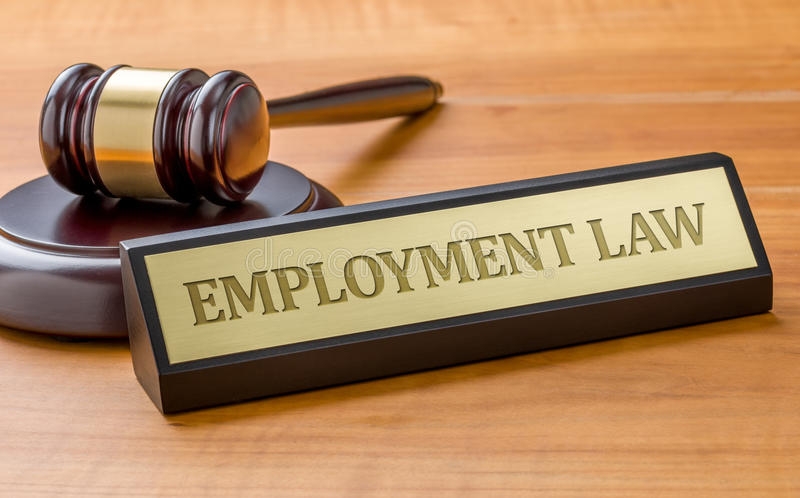 The Government have made several updates to their guidance on the Coronavirus Job Retention Scheme (CJRS), which has brought some welcome clarity to some aspects of the scheme. In addition, on 15th April, the Treasury published a direction to HMRC which provided further details of the rules of the scheme (Treasury Direction).
The Government have made several updates to their guidance on the Coronavirus Job Retention Scheme (CJRS), which has brought some welcome clarity to some aspects of the scheme. In addition, on 15th April, the Treasury published a direction to HMRC which provided further details of the rules of the scheme (Treasury Direction).
As of 17 April 2020, the CJRS has been extended until the end of June. The announcement stated that any further extensions will take into account wider measures to curb the spread of the virus, and ‘the responsible management of public finances.
Our legal team have reviewed this update and provide practical Employment Law advice for employers explaining the main changes arising from the most recent Guidance and Treasury Direction. If you need answers to specific questions surrounding the Coronavirus Job Retention Scheme, please get in touch today.
Coronavirus Job Retention Scheme - Eligibility
- The main change to the CJRS is that the cutoff date of 28th February 2020 for employees to have been on your payroll has been extended to 19th March 2020, allowing for those who had changed jobs shortly prior to the Chancellor’s announcement of the scheme to now be eligible for furlough. This also means that those who were placed on lay off or made redundant due to their ineligibility may now be re-employed and designated as furloughed workers.
- Consequently, the Guidance has been amended to state that the employer must have created a PAYE payroll scheme on or before 19th March 2020. Previously, the guidance had stated that the payroll scheme must have been created on or before 28th February 2020.
- The Guidance also provides further information in respect of whom the Employer can claim for. Employers can only claim for furloughed employees if they were on the employer’s pay roll on or before 19th March 2020, and an RTI submission notifying payment in respect of those employees had been made to HMRC on or before 19 March 2020.
- The updated Guidance also confirms that, if an employee was on your payroll on or before 28th February 2020 (i.e. an RTI notification was sent to HMRC on or before 28th February 2020), and was made redundant or left your employment prior to the new cutoff date of 19th March 2020, they will still qualify for the scheme if you re-employ them and put them on furlough after 19 March 2020.
- The Guidance goes onto confirm that, if an employee has left your employment for new employment, and has been furloughed from their new employment, then you should not re-employ them in order to furlough them also.
Annual Leave and Holiday Pay
We previously published an article on whether annual leave could be taken during a period of furlough and concluded that it was likely that holiday could be taken without it interrupting the period of furlough. The Government have now updated the Guidance for Employees and confirmed that annual leave can be taken as normal during a period of furlough, and that employees will be entitled to full pay during any periods of annual leave. The guidance does not explicitly state that employers can impose leave during a period of furlough.
Employees Self-isolating or on Sick Leave
In respect of sick pay, the Guidance currently states that, if employers want to furlough employees for business reasons and they are currently off sick, they are eligible to do so. In these cases, the employee should no longer receive sick pay and would be classified as a furloughed employee.
This appears to be contrary to the Treasury Direction which states that the period of furlough will not take effect until the employer’s liability to pay SSP has ended. It is not clear whether this means that the employees’ most recent fit note must have expired, or whether the employee is able to be furloughed if they declare themselves fit for work. However, it is likely to be considered an abuse of the scheme if an employee is placed on furlough when they are clearly still unfit for work and covered by a fit note.
Employees Becoming Sick Whilst Furloughed
The Guidance currently states that a furloughed employee who becomes ill must be paid at least Statutory Sick Pay, and that it is up to the employer to decide whether to keep the employer on furlough, or whether to move the employer onto Statutory Sick Pay. However, the Treasury Direction states that any entitlement to Statutory Sick Pay by virtue of the employee becoming unfit for work must be disregarded, suggesting that the employee should remain on furlough even if they are unfit to work.
We would recommend this latter approach, as moving the employee from furlough to Statutory Sick pay would interrupt the period of furlough leave, and could potentially jeopardize your claim under the CJRS if the employee has been on furlough for less than three continuous weeks.
Employees on Unpaid Leave
If an employee started unpaid leave after 28 February 2020, it is now possible to designate them as a furloughed worker instead, and they should be paid up to 80% pay subject to the cap of £2,500 per month. However, the updated guidance confirms that, if an employee went on unpaid leave on or before 28 February, you cannot furlough them until the date on which it was agreed they would return from unpaid leave.
In respect of pay that can be recouped from the Government under the CJRS, the Treasury direction states that employers will be reimburse the gross amount of earnings paid or reasonably expected to be paid by the employer to an employee. Therefore, there is a possibility that pay may not be recuperated in respect of employees who have been laid off under the terms of their contract, as in this case, there would be no reasonable expectation of pay. However, the Guidance does confirm that claims should be started from the date that the employee finishes work and starts furlough, not when the decision is made, or when their furloughed status is confirmed in writing. Therefore, when writing to employees to confirm their furlough status, it is possible to backdate the period to start from the date that the employee was told they were not required to work.
Shielding Employees
The updated guidance has removed the requirement that, in order to be eligible for furlough, shielding employees would otherwise have been made redundant. This in in line with the shift in the purpose of the scheme from a narrow focus of preventing redundancies, to a much broader purpose of aiding with employment costs to businesses affected by the Coronavirus.
SSP Coronavirus Amendment
The Government have now also made the Statutory Sick Pay (General) (Coronavirus Amendment) (No. 3) Regulations 2020, which provides that a person is deemed to be incapable for work, and therefore entitled to SSP if they have been identified as extremely high risk, and have been advised to shield. It doesn’t appear that this regulation has retrospective effect, and therefore shielding employees are only entitled to SSP as of 16th April 2020.
Employee Transfers Under TUPE and on a Change in Ownership
The Guidance now confirms that you can claim under the CRJS in respect of those employees who have transferred to you under TUPE where the transfer took place after 19th March 2020. This also applies to Group Companies who have transferred employees between the Group in order to consolidate payroll.
How to Make a Claim
The updated Guidance contains additional information about
how to make a claim, although we imagine more information will be provided once the scheme is up and running.
- The Guidance confirms that, if you have fewer than 100 furloughed staff, you will be asked to enter the details of each employee you are claiming for directly into the system.
- If, however, you have more than 100 furloughed staff, you will need to upload a spreadsheet with the information rather than input directly into the systems.
- The Guidance specifies that only .xls .xlsx .csv .ods file types will be accepted.
Working for a Different Employer
The Guidance has now confirmed our earlier view that, so long as an employee’s current contract of employment allows them work for another employer, they are permitted to take on another job during their period of furlough. There appears to be no restriction on this, and therefore there is nothing stopping a furloughed full-time employee from taking on another full-time role in, for example, a supermarket. However, employees should remain available to return to work at short notice if recalled by their primary employer.
For legal advice you can trust about the Coronavirus Job Retention Scheme and guidance surrounding furloughed employees get in touch with our team of Employment Law Consultants today. The Government have made several updates to their guidance on the Coronavirus Job Retention Scheme (CJRS), which has brought some welcome clarity to some aspects of the scheme. In addition, on 15th April, the Treasury published a direction to HMRC which provided further details of the rules of the scheme (Treasury Direction).
As of 17 April 2020, the CJRS has been extended until the end of June. The announcement stated that any further extensions will take into account wider measures to curb the spread of the virus, and ‘the responsible management of public finances.
Our legal team have reviewed this update and provide practical Employment Law advice for employers explaining the main changes arising from the most recent Guidance and Treasury Direction. If you need answers to specific questions surrounding the Coronavirus Job Retention Scheme, please get in touch today.
The Government have made several updates to their guidance on the Coronavirus Job Retention Scheme (CJRS), which has brought some welcome clarity to some aspects of the scheme. In addition, on 15th April, the Treasury published a direction to HMRC which provided further details of the rules of the scheme (Treasury Direction).
As of 17 April 2020, the CJRS has been extended until the end of June. The announcement stated that any further extensions will take into account wider measures to curb the spread of the virus, and ‘the responsible management of public finances.
Our legal team have reviewed this update and provide practical Employment Law advice for employers explaining the main changes arising from the most recent Guidance and Treasury Direction. If you need answers to specific questions surrounding the Coronavirus Job Retention Scheme, please get in touch today.



